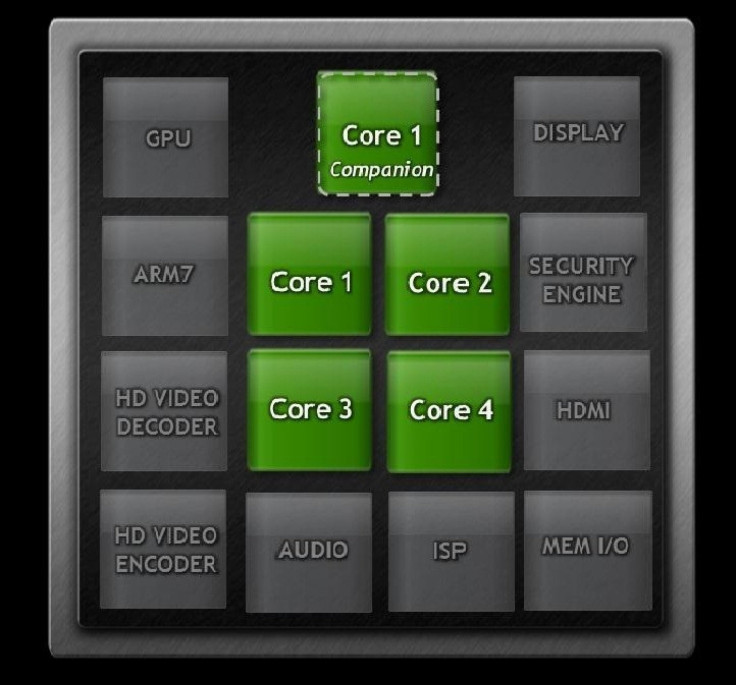Next-Gen 'Kal-El Chip' Has Five Cores: Nvidia

Graphics chipmaker Nvidia said its next-generation Kal-El Tegra chip, built under Variable Symmetric Multiprocessing architecture, will have five rather than four cores, as announced in February.
vSMP technology delivers power saving that not only minimizes power consumption during active standby states, but also delivers quad-core performance benefits while keeping dynamic power consumption within thermal budgets required for mobile devices.
The latest development signals that Nvidia is set to take on giants like Qualcomm and Texas Instruments in the fight for market share in mobile processors. Nvidia, like Qualcomm and TI, is using designs from ARM to build its mobile chips.
In February, Nvidia said its Kal-El chip was the world's first quad-core processor, but now it says the chip actually has five cores.
Our next-generation Tegra processor, codenamed 'Project Kal-El,' is widely known as the world's first quad-core mobile chip. Today, we're unveiling Kal-El's little-known fifth core in two new whitepapers that detail its 'Variable SMP' architecture, Matt Wuebbling, director of product marketing for Tegra, wrote in a blog post.
Nvidia calls this fifth core as companion core that runs at a lower frequency and operates at exceptionally low power, thereby increasing the battery life of mobile computing devices such as smartphones and tablets.
The fifth core is designed on a low power process technology, but has an internal architecture identical to the main Cortex A9 CPU cores. Since it is built on a low-power process in the low-performance ranges, it consumes lesser power than the main CPU cores that are built on a fast process technology.
Nvidia said the power-performance measurements on Kal-El show that the fifth core delivers higher performance per watt than the main cores at operating frequencies below 500 MHz, and therefore the maximum frequency of the fifth core is capped at 500 MHz.
The fifth core is used primarily when the mobile device is in active standby and performing background tasks such as e-mail syncs, Twitter and Facebook updates, etc. It is also used for applications that do not need significant CPU processing power, such as streaming audio, offline audio and both online or offline video playback.
On the other hand, the peak quad-core processors were turned on when performance hungry applications such as gaming, web browsing, flash media and video conferencing were running.
For higher performance tasks, Kal-El disables its companion core and turns on its four performance cores, one at a time, as the work load increases, Wuebbling wrote.
Wuebbling also noted that Variable SMP architecture is also completely OS transparent, which means that operating systems and applications don't need to be redesigned to take advantage of the fifth core.
Kal-El includes a brand-new 12-core GPU that delivers up to 3 times the graphics performance of Tegra 2, as well as several additional new capabilities, Wuebbling said.
Tablets using Kal-El, which will be manufactured at 40 nanometers, are expected to be available in time for the holiday season, while smartphones would arrive in the first quarter of 2012.
Following is the comparison of companion core, or fifth core, and normal CPU cores:
Fifth Core | Main CPU Cores | ||
Architecture | Cortex A9 | Cortex A9 | |
Process Technology | Low Power (LP) | General/Fast | |
Operating Frequency Range | 0 MHz to 500 MHz | 0 MHz to MaxGHz | |
© Copyright IBTimes 2024. All rights reserved.











